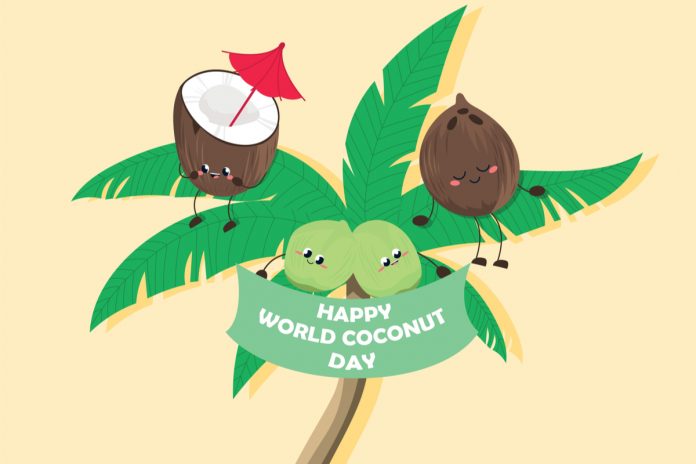A much loved tree for its tall stately grace beauty and nurturing, there is nothing that cannot be put to good use from the coconut tree. Besides being highly acclaimed for its nutritional value, just the sight of a gently swaying coconut tree can bring calm to your mind.
If you live anywhere on the alongside the coasts of India, you are indeed lucky! The beautiful tree coconut tree that pretties its shoreline and is native to the tropical coast is celebrated today!
A much loved tree for the tall stately grace and beauty, there is nothing that cannot be put to good use from the coconut tree. Besides being highly acclaimed for its nutritional value, just the sight of a swaying coconut tree bring calm to your mind.
As coastal inhabitants we feel very close to this beautiful tree and we are honoured to honour it on World Coconut Day September 2, 2021.
‘Coconut, The Tree Of Life Sustains Family Well-Being,’ is the theme by the Asian and Pacific Coconut Community for World Coconut Day, 2021.
Here are some facts about the coconut tree:
- The coconut tree or a coconut palm is a member of the species Cocos nucifer. While all coconut trees are palm trees, not all palm trees are coconut trees.
- Tall as the sky they seem – the trees themselves generally rise to a height of about 80 feet.
- Coconut fruits are buoyant. Floating away on the tides is one way that the plant has been dispersed across the tropics to other parts of the world where coconuts are now very plentiful.
- Tropical and subtropical climates see the most proliferation in the growth of coconut trees. Hawaii, Puerto Rico and Cuba are some other places where coconut trees grow.
- Optimum utilisation of each part of the coconut tree is far greater in places like India, South Asia, and the Polynesian islands.
- Typically, most coconut trees produce about 30 coconuts per year.
- The tree itself is attached to a very strong fibrous root system.
- The expansive usefulness of coconuts is unique. Almost no other tree has as many marketable and usable elements as the coconut.
– One of the truly remarkable things about coconuts is that every single part of the fruit can be used: the husk, the hard shell, the soft inner flesh and the water, milk and oil.
- The outer husk of the coconut is used to weave sacks, rugs, lampshades, home furnishings and other accouterments. They make natural scrubbers and strong rope. The shells are used as bowls, baskets and other handicrafts.
- Coconut milk can be squeezed out of fresh coconut as milk which is traditionally used in coastal curries. Coconut milk is gaining popularity as a dairy milk substitute for people who are vegan and lactose –intolerant. Solachi Kodi is a drink – always served with thalis on our Konkan coast – made from kokum berries and coconut milk
- Coconut water is rich in electrolytes and is a good diuretic.
- Coconut oil, aside from being a healthful addition to the diet, is used widely in the beauty industry because it bestows rich nutrients to our hair and skin and body in general.
- Today, coconut trees, coconuts and coconut by-products are a critical part of the world economy. For countries that export coconuts to other parts of the world, they’re a sustaining part of their gross national product.
- Last but not least, coconut trees are also popular because their presence is synonymous with golden beaches, blue oceans, warm sun, relaxation and the blissful life.
- It has truly been a life-giving plant.
Have you ever seen a coconut tree withstand a storm?
May you never be too busy to stop and feel the calm of this magnificent tree that we have within our midst.









